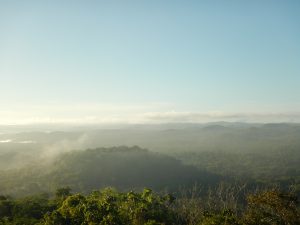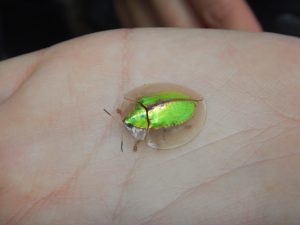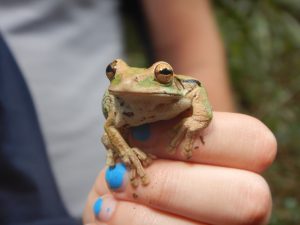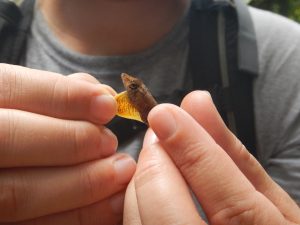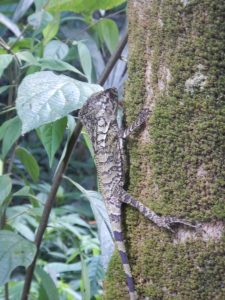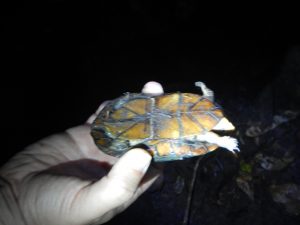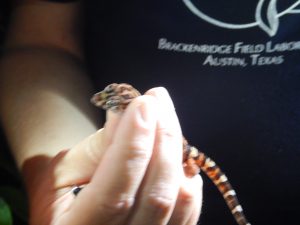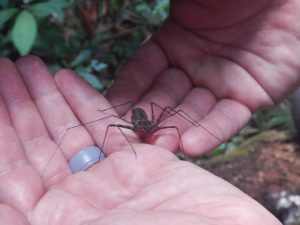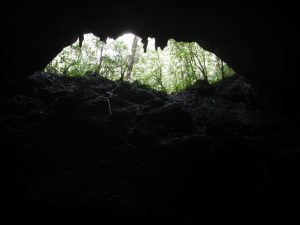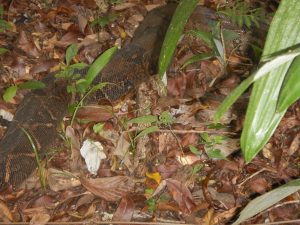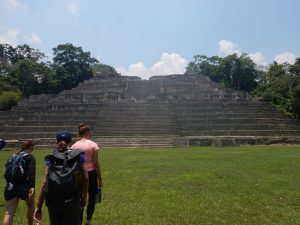We didn’t go bird watching this morning so I didn’t see very many birds in the morning. Instead, we got up early and hiked to the bird tower. The climb was tough but definitely worth. When we climbed the tower, we could see the clouds rolling across the mountains and the sun shining across the forest. There were no man-made structures beyond our research station in any direction which was a really crazy thing to realize.

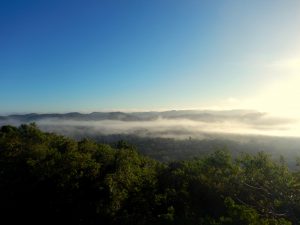
We spent the rest of the morning collecting camera traps. The hike was long, but not nearly as long as it felt the first day. Along the way I kept smelling Hemipterans, I definitely learned their weird licorice-cyanide scent from the bugs I found before. We were able to collect them all by lunch. In the afternoon we caught up on our journals and blogs. I noticed a plumbeous kite building a nest up in the main tree which was interesting. It kept returning to this one Y in the branches with dead sticks.
I also watched the nest in the satellite some more. I thought that the sulfur breasted flycatcher was coming to the nest without food and sticking its head in with no response to the babies. I was skeptical of what was going on, so I walked around the satellite to the side you could see into, not the one where the birds were entering, and couldn’t see any of the hatchlings. I assumed the sulfur breasted flycatcher had eaten them, although that seemed strange based on its name. But then I was watching the nest some more and, contrary to what I previously thought, the sulfur breasted flycatcher brought something and then the babies started squawking. This was shortly followed by the slaty ant wren bringing something and the babies squawking. It now seems clear that both these species are feeding the antwren babies, but I’m still very confused. On the bright side, the hatchlings aren’t dead.
In the afternoon, Scott took us out to see fungus chambers of leaf-cutter ant nests. We started with a one-year-old nest and with a bit of work digging found a small ball of fungus and the queen. I was surprised to realize that the fungus chambers are three dimensional, which makes sense, I just wasn’t expecting it. I was amazed to see how large the queen was. She was huge and it was impossible to imagine that she could live for 25 years with her colony just producing eggs. We followed the one-year-old nest with the ginormous 20ish-year-old nest that we found while placing our camera traps. We dug for a long time, but the ants barely seemed to respond. We eventually hit some chambers, but they weren’t fungus chambers. They were trash chambers filled with beetle larvae and dead fungus. It was really strange and surprisingly warm and Scott was amazed that it was so high up. Normally trash chambers are deeper beneath the colony.

We finished our last evening here at Las Cuevas looking at our camera trap photos. With the very first camera we opened we found a tapir, which we all screamed and gasped at.

But the picture that took the cake was the next one, a jaguar.

We were so startled to see the perfect side picture of a jaguar walking down the trail right next to our camera trap. We also wound up catching a bunch of peccaries, a puma, a second Jaguar, a nine-banded armadillo, a rice mouse, and a coatimundi. We also caught a few Great Currasows (my taxon!).

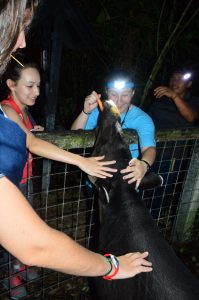







 No spiders or corallimorphs, zoanthids, or anemones seen today
No spiders or corallimorphs, zoanthids, or anemones seen today